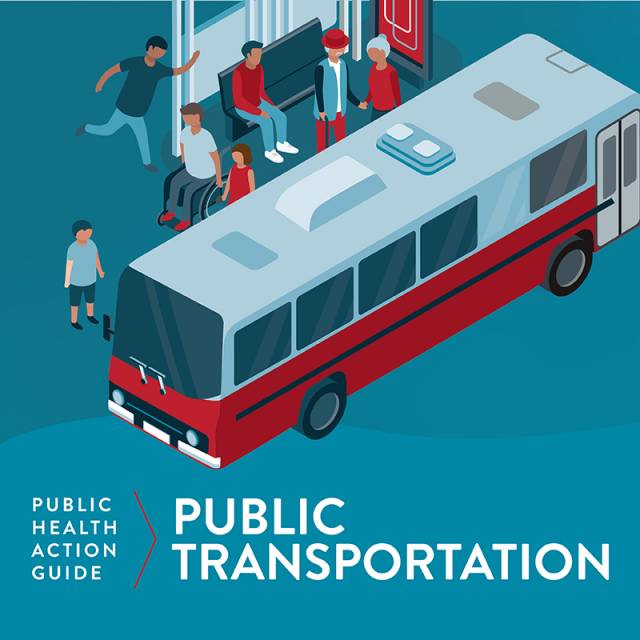You are here
New Action Guide Promotes Health Benefits of Expanding Public Transportation Systems
Did you know public health stakeholders can significantly improve community health by supporting public transportation systems? This information comes from a new CDC Foundation Public Transportation Action Guide for public health care professionals. Adequate access to public transportation systems is associated with a range of positive health outcomes, including more physical activity, fewer traffic injuries and better air quality.
The new action guide synthesizes lessons learned from a project examining the role of public health in addressing social determinants of health through community-wide interventions, including the introduction or expansion of public transportation systems. With funding from the Robert Wood Johnson Foundation, the CDC Foundation partnered with the Centers for Disease Control and Prevention (CDC) to examine the contexts of successful implementations large-scale interventions recommended by the Health Impact in Five Years (HI-5) Initiative.
CDC developed the HI‐5 Initiative to help address underlying social determinants of health, the conditions in the places where we live, learn, work and play that contribute to our health and well-being. HI-5 strives to improve population health outcomes through community-wide approaches that have proven, cost-effective benefits in five years or fewer.
Public transportation systems consist of different modes that can move groups of people to their destinations on scheduled, pre-planned routes. Whether by bus, train, van pool, ferry, or other modes, public transportation helps people safely and reliably reach everyday destinations. The HI-5 Initiative highlights the introduction or expansion of public transportation systems as evidence-based interventions that can improve health while benefiting the environment, public mobility, economic security and public safety. Unfortunately, 45 percent of people in the United States have no access to public transportation, making it difficult to access jobs, food, education, healthcare services and social connections.
Working toward shared goals with the public transportation sector represents a compelling opportunity for both public health practitioners and transportation planners. While public health and public transportation represent different disciplines that may not always collaborate directly, many similarities and synergies exist between both fields. Public health and transportation share similar goals to improve public wellbeing and also overlap on key strategies like using data to drive decisions and piloting small projects to inform larger efforts. The action guide identifies key opportunities to build bridges between both fields.
Transforming the public transportation system to ensure more people who need it have access to it requires a multi-sectoral approach that includes public health partners. This new action guide highlights a number of specific opportunities for public health to partner with public transportation, including:
- Contacting local transportation planners to exchange information about your goals and projects to identify opportunities to collaborate;
- Convening transportation and land use stakeholders together with public health regularly to learn about upcoming projects and engage with the community before ground is broken;
- Providing relevant health data to decision makers to build evidence for the need to increase access to public transportation; and
- Inviting transportation planners and mobility managers to offer their perspectives on public health interventions during the planning stage.
Access this new action guide today to learn more about partnering with the public transportation sector to improve community health. Introducing or expanding public transportation systems can boost physical activity, reduce traffic injuries, improve air quality and benefit health. By working together to expand access to public transportation systems, we can help individuals and communities thrive.

